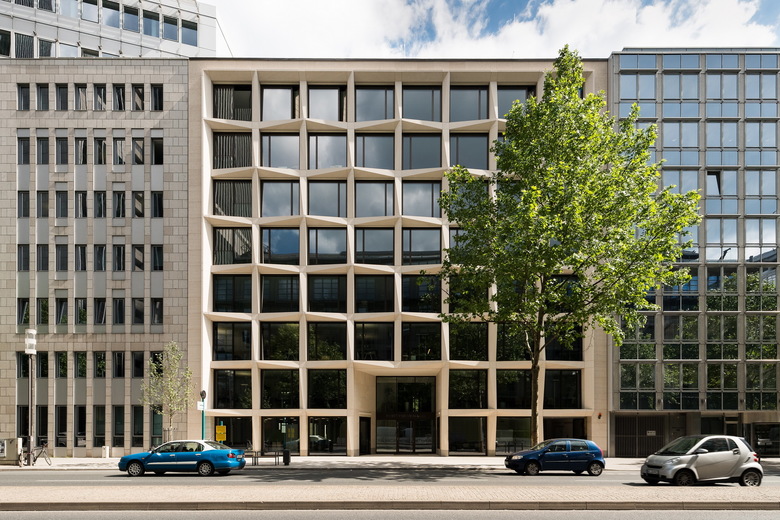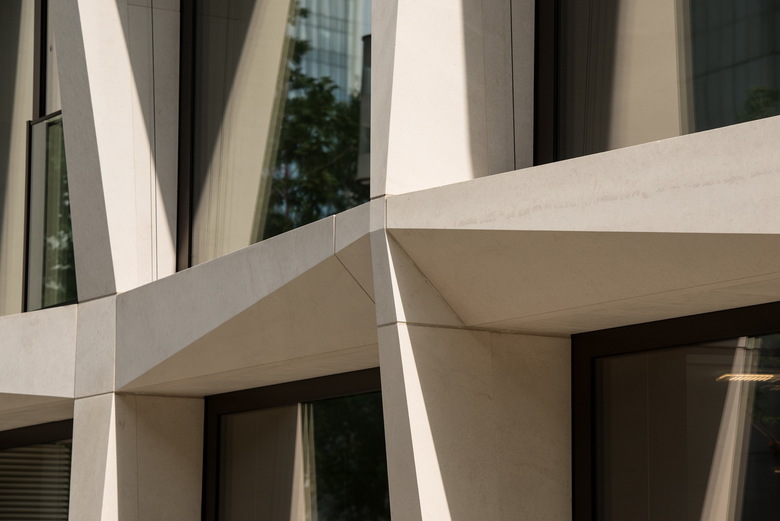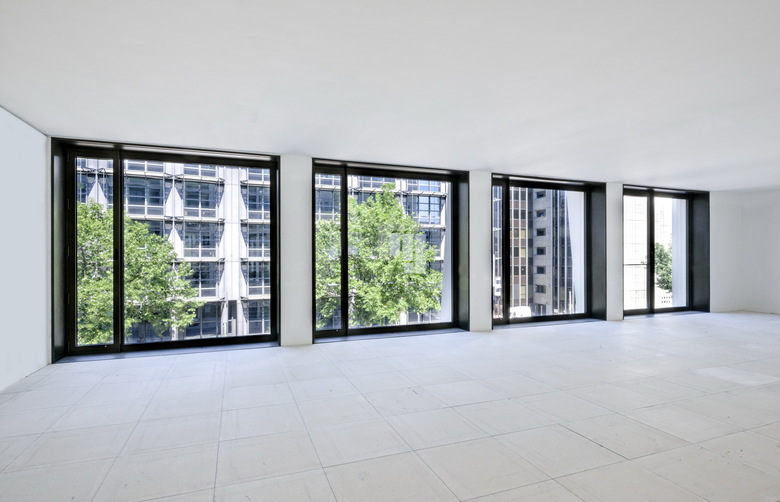A Natural Stone Wave
The Mainzer Landstraße, a major roadway in Frankfurt am Main, has been characterized by some pretty sober commercial architecture. A new eight-story office building designed by TEK TO NIK Architekten features a complex natural stone façade that adds some movement to the street.
Frankfurt am Main is known well for its numerous banks and, with them, an architectural atmosphere in the central city that is defined by some considerable and rather mediocre buildings. This was not always the case; before the Second World War the city was known for its "Frankfurt Style," whose origins date back to the end of the 19th century and which decisively shaped the image of the then free imperial city. As in many German cities, most of Frankfurt's buildings were destroyed in WWII, so the city had to reinvent itself physically. This was not always to the city's benefit, according to the opinions of many of the city's residents. The Mainzer Landstraße, between the main station and Taunusanlage station, has been the setting of this artistic indifference.
When the 1960s building at Mainzer Landstraße 47 with its curtain wall of horizontal strip windows (photo near bottom) changed hands in 2012, it became clear to the new owners that a new building was needed to meet the requirements for modern office buildings, particulary with regards to flexibility in space planning. Frankfurt's TEK TO NIK Architekten, under lead designer Manfred Wenzel, won a design competition by conceiving of the building's façade as a creative, urban sign, consciously connecting it to the historical Frankfurst style. The new building was engineered as a reinforced concrete frame with the same dimensions as its predecessor.
The architects did not have much room for design in the façade, though, given that the largest part of its 625-square-meter surface area would be occupied by an 8 by 8 grid of large 3x3-meter windows. So they sculpted three-dimensional pilasters surrounding the windows with forward and rebounding forms produce a wave-like rhythm. It looks as if the façade is constantly in motion, not least due to the ever-changing light conditions upon the stone surfaces. The logic of this design is based on a two-story grid, in which the stone pilasters between any four windows appear as an indented or protruding cross.
What one would expect from concrete is done here with natural stone, specifically beige Portuguese limestone from Hofmann Naturstein. The pilasters were milled with computerized 5-axis CNC machinery according to the architects' 3-D model. Each piece is about 3 meters long, projects up to 40 centimeters, and weighs 800 kilograms; a total of 116 tons of natural stone was installed. The architects contend that the thermally insulated curtain façade is the first of its kind in Germany. Every detail – from the hidden rain gutters to the calculated effect of the shading – was given their utmost attention. Furthermore, the contractor faced challenges from the cramped staging area on the construction site; each stone piece had to be delivered just in time and installed immediately.
For the architects, the result is a long-lasting, ecological, and economical façade design that makes progress in the plastic design of urban spaces. For Frankfurt am Main and its residents, the new building is a treasure which, through its careful design and selection of materials, elevates the all-too-often uninspired architecture of the Mainzer Landstraße.
A version of this article originally appeared as "Natursteinwelle" on German-Architects.
PROJECT DETAILS
Office and Administration Building FORTYSEVEN & CO
Frankfurt am Main, Germany
Architect
TEK TO NIK Architekten und Generalplaner GmbH (Manfred Wenzel)
Manufacturer
Hofmann Naturstein GmbH & Co. KG
Product
Cream Royal, limestone, white, honed C60
Client
Projektgesellschaft Mainzer Landstrasse 47, Max Baum Immobilien, Frankfurt am Main; Competo Capital Partners GmbH, Munich
Structural Engineer
Bollinger & Grohmann GmbH
Construction Site Management
Dobberstein Architects
Completion
End of 2015











